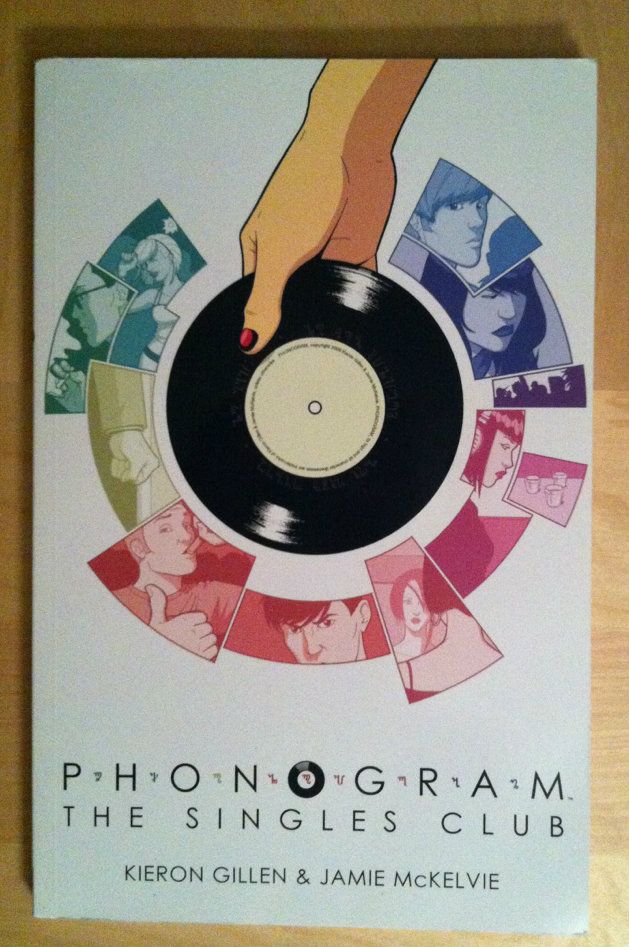By Kieron Gillen, Jamie McKelvie, and Matt Wilson; Image Comics
I really like Phonogram: The Singles Club. Phonogram's premise of music as literally a kind of magic is brilliant and a wonderful metaphor for appreciating media. The way The Singles Club grows this idea and complicates it by portraying a more diverse group of Phonmancers enhances everything I loved about the first volume and tells a fantastic story. It is literally the first comic that the one coworker I've got kind of reading comics tried, and its a big part of why she's still kind of reading comics. Basically The Singles Club is a fantastic, smart, fun and accessible comic that everyone should read.
The thing is, Phonogram: The Singles Club is also kind of a masterpiece of comics craft. Part of this is that The Singles Club is exceptionally well written, with its dynamite premise, engaging troupe of characters, and perfectly tuned dialogue. It's also a comic with beautiful artwork: fantastic acting, dynamic use of space, and aggressively thoughtful colouring (which in hindsight is worthy of its own analysis, seriously). But the thing that makes Phonogram: The Singles Club the kind of comic that everyone should be taking a very close look at, is the way Team Phonogram embeds the story so completely in setting. Structurally, The Singles club tells seven interlocking stories with common settings that occur simultaneously on the same night, and this complicated, multifaceted beast fits together PERFECTLY. This narratives thread like a tapestry, the chapters obey the timeline of the story like a Teutonic train schedule, and the physical spaces are complete enough to pass building codes. Phonogram: The Singles Club is just about the most granular, engineered short comics run I've ever read.
Because Phonogram: The Singles Club is so well crafted, you can literally create page-by-page maps of plot, time, and setting of really remarkable detail. And, because I love making infographics, I've done just that.
Phono-Infograms:
1: Plot Map
2: Timeline
3: Setting Map
Plot Map: The idea here is to give a loose appreciation of each characters overall plot that accounts for interactions and provides loose information on sequence and location. Bear in mind that the y-axis on this sucker is set to absolutely no kind of scale, although events within given lines occur in the order shown, and that generally speaking events at the top of the diagram precede events shown further down. In many ways this diagram is meant chiefly to show character interactions, provide overall shape to the plot, and to function as a unifying plot key for the other two infograms.
(Apologies in advance for any mistakes or omissions.)
This diagram is a plot map so there will be *SPOILERS* in the diagram. Be wary.
A couple kind of cool things pop out once you look at the plot this way. For instance, Penny, the protagonist of Chapter 1, also acts as a framing narrative as she, like the popular party person she is, circulates around the club and touches base with most of the key characters and narratives. Seriously, study this comic!
(Stay tuned for more Singles Club Infographics.)
Previously:
So I Read Phonogram: Rue Britainia
So I Read Phonogram: The Singles Club


No comments:
Post a Comment